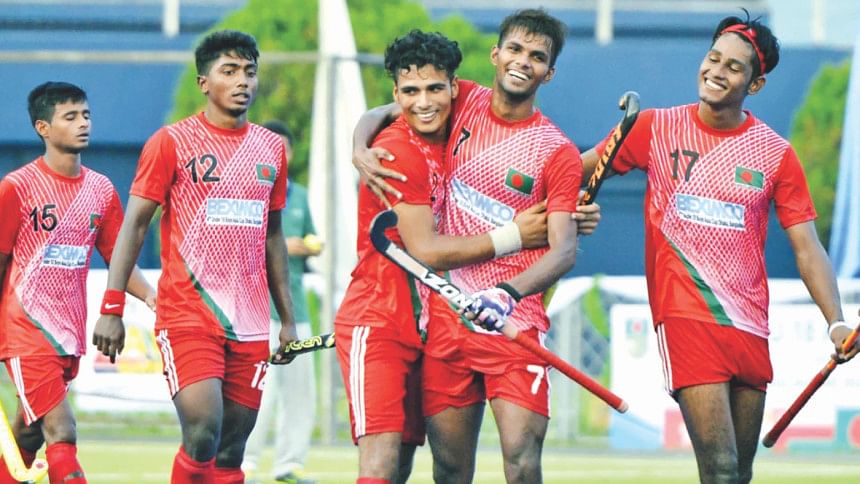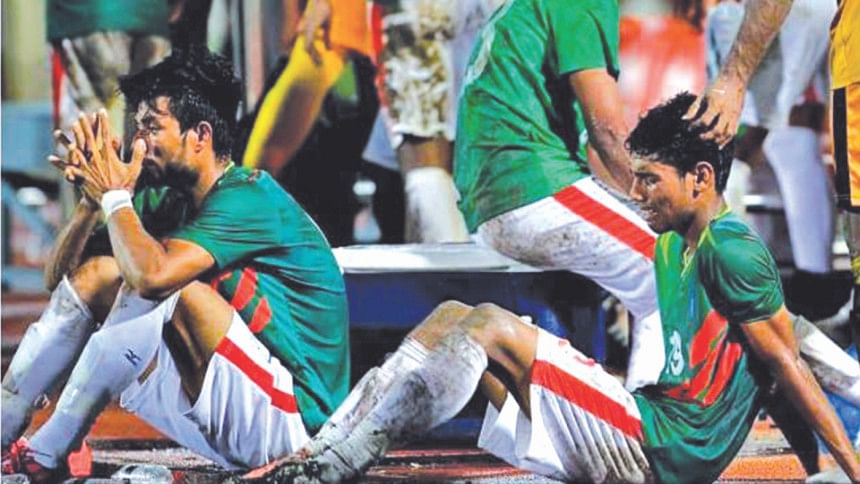Maintaining as opposed to sustaining

Halfway through the Rio 2016 Olympic Games, the unlikeliest of things happened—Bangladesh was celebrating an Olympic gold. It was highly unlikely because in all their previous forays in the Games, Bangladeshi athletes had only ever qualified for the greatest sporting showcase with wildcard entries.
2016 was the first time that an athlete, golfer Siddikur Rahman, had qualified on merit. But he, along with the rest of the Bangladeshi contingent of swimmers, shooters, archers and sprinters, had failed to get even close to a podium finish.
It is also around this time that it should be mentioned that the 'Bangladeshi' success story, while being celebrated in some quarters, also elicited sneers of derision from others, namely in the social media echo chamber. It was after all Russia who was credited with the gold won by Margarita Mamun, whose late father was a Bangladeshi-born engineer settled in Russia. Never mind that the gold winner herself was quoted by Reuters as saying that it was a gold for two countries or that she had visited her father's native Kashipur village thrice in her 20 years; there was a ring of rationality in the social media ruckus about Bangladeshis claiming what really was a foreigner's achievement just because of an accident of birth.

One major cause for the discontent was the realisation that, with the existing facilities and infrastructure on offer here, home-grown success in rhythmic gymnastics would just not have been possible. It is the nature versus nurture debate, only here it is not so much a debate because in sport, the environment in which athletes grow up and the opportunities they can avail make all the difference, because in global competition they will come up against opponents both talented and profoundly prepared.
Reports, although hard to verify because of the shoddy nature of recordkeeping in the less popular sports like gymnastics, emerged that on one of her visits Margarita—the daughter of a Russian gymnast mother—had wanted to compete for Bangladesh and even turned up for an age-level trial. The story goes that she was not given due attention, or perhaps the family realised that this is not a country that will make full use of her talent or passion. Margarita's is a success story that throws into stark relief Bangladeshi sports' failure to plan and create sustainable success. Sustainable development is perhaps fast becoming one of those buzzwords that many use without fully grasping, but at its heart is a marriage of policy with grassroots intent.
In most scenarios, with the notable exception of cricket, that marriage is a dysfunctional one. There are of course exceptions, but they unfortunately just prove the rule. Few stories are as inspirational as the recent one of the Under 14 and later Under 16 women's football team carrying all before them by first winning the Asian Football Confederation (AFC) Under 14 Girls' regional championships in 2015 and winning all matches at home in the AFC Under 16 Women's Championship Qualifiers. It is a truly remarkable achievement by mostly underprivileged teenage girls from the conservative environs of rural Bangladesh.

Those who watched the girls in action were uniformly impressed by their skill and stamina, which hints directly that they were beneficiaries of good coaching and effective training regimes. It is a microcosm of what is possible when interest and passion at grassroots level is met with a willingness to nurture those qualities.
But as of this moment, it remains a microcosm because a large majority of the heroic girls—both at Under 14 and Under 16 levels—have come from Kalsindur Government Primary School of Dhobaura Upazila, and the seeds of inspiration were sown mostly by the enthusiasm and will of one man: coach Mohammad Mofizuddin, who in 2011 set out to form a girls' team which by 2013 won the Bangamata Gold Cup. He formed the nucleus for the Bangladesh Football Federation (BFF), and the BFF ran with it ahead of the Under 14 and Under 16 events.
One notable takeaway from the story of the Bangladesh U-16 girls are the dates: in 2011 Mofizuddin was planning and forming a team for a competition that was to begin two years later—a nationwide competition for schoolgirls. Suffice to say, that kind of long-term vision is very rare in the higher echelons of Bangladeshi sport, as Margarita's story illustrates.
There have been flashes, but nothing that has sustained. Before the 2010 South Asian Games at home, the participating athletes started training under the auspices of their respective federations a year before the event and the step bore results—Bangladesh won 18 gold medals, the highest in their history.

The impetus was lost, however, as the South Asian Games took a long break, and Bangladesh won just four gold medals.
Under foreign coach Oliver Kurtz, Bangladesh's hockey team won the Asian Hockey Federation (AHC) Cup for the third edition in succession in November 2016, and again it was down to a long training lead-up to the AHC event.
In stark contrast is the state of the men's football team. The domestic calendar, dominated by the clout of clubs, often interferes with international assignments. And the state of domestic events, with clubs often being at loggerheads resulting in delays of major leagues and competitions, hardly improves matters. The result has been the humiliating defeat to Bhutan in the Asian Cup Qualifying playoffs.
A way to turn things around would be long-term planning, which has already been seen to be beneficial on the rare occasions when such initiatives have been allowed to pan out. Shooting is a sport where Bangladesh has traditionally been promising, but too often a lack of proper grassroots training has seen talented shooters fall by the wayside when faced with the best the world has to offer. In this respect the Bangladesh Shooting Sport Federation should come up with a vision now for the 2020 Olympics—much like BFF's Vision 2022, but with more substance—to give themselves enough time to improve the shooters already in place and unearth new ones.

For that to happen, as mentioned, there has to be policy and funding in place that encourages grassroots development. Currently, much of the government funding maintains what is already in place—in other words funds allocated to federations enable them to maintain their day-to-day operations, but not much else. Funds to sustain growth or development is another matter altogether, and one that is conspicuous by its absence. Unless the policies are in place to sustain growth across the country's sport, successes like the Under 14 and Under 16 girls' teams and the 18 South Asian gold medals will continue to be flashes in the pan.
The writers are sports reporters at The Daily Star.

 For all latest news, follow The Daily Star's Google News channel.
For all latest news, follow The Daily Star's Google News channel. 



Comments